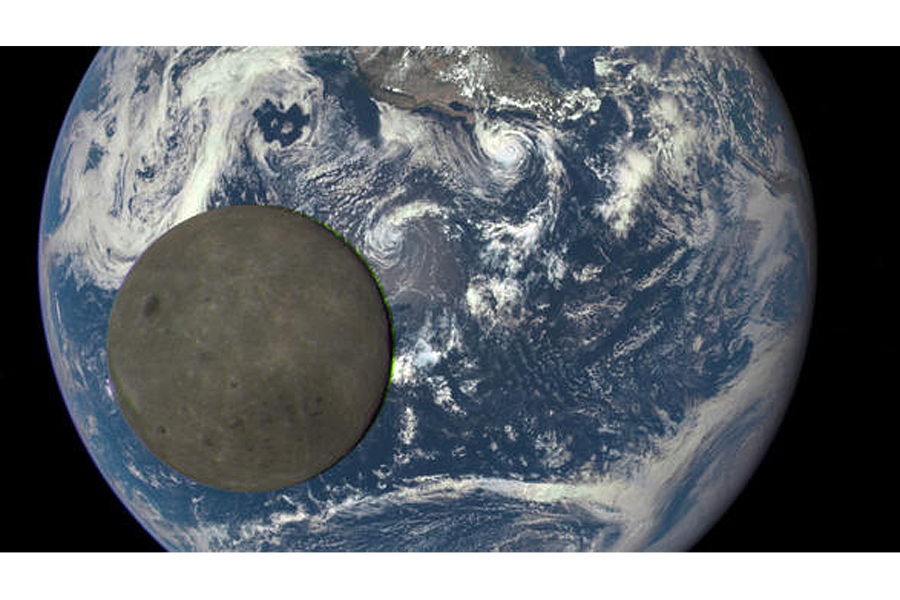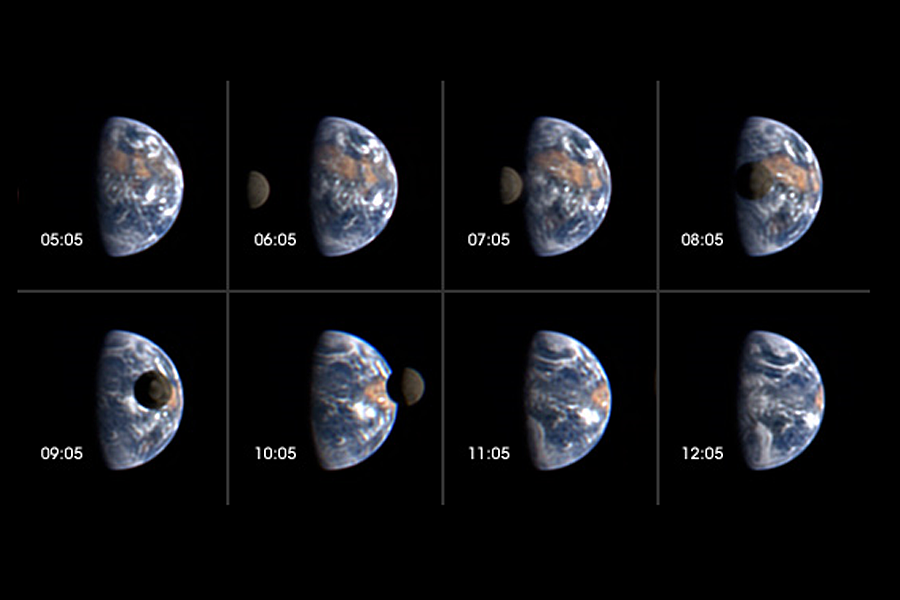NASA spacecraft snaps spectacular images of moon transiting Earth
Loading...
Sen—A new set of images released by NASA shows an incredible vista of the far side of the Moon passing in front of Earth, taken from a vantage point located 1.6 million km (one million miles) away.
On July 16 2015, the 4-megapixel Earth Polychromatic Imaging Camera (EPIC), installed on the Deep Space Climate Observatory (DSCOVR) satellite, took a series of images between 11:50 and 16:45 UTC as the Moon passed over the Pacific Ocean while the Earth rotated beneath it.
The far side of the Moon, often referred to mistakenly as the "dark side" because it is never directly visible from Earth, is seen fully illuminated by the Sun in a striking contrast to the brilliant blue behind it. The far side was an unimaged mystery until the Soviet probe Luna 3 sent back the first picture in 1959.
Despite being illuminated by as sunlight as the Earth, the Moon looks much darker bcause its rocks are much less reflective "It is surprising how much brighter Earth is than the Moon," said Dr Adam Szabo, DSCOVR project scientist at NASA’s Goddard Space Flight Center, in a statement. "Our planet is a truly brilliant object in dark space compared to the lunar surface."
Launched into an L1 orbit on Feb. 11 2015, DSCOVR, a collaborative effort between NASA, the National Oceanic and Atmospheric Administration (NOAA) and the U.S. Air Force, was created with the primary objective of providing real-time solar wind monitoring for the U.S. in order to increase the accuracy and forecast time of space weather alerts. Using EPIC, the satellite provides scientists with a constant view of a fully illuminated Earth as it rotates, allowing daily studies of global variations of ozone, vegetation, cloud height and atmospheric aerosols. However, about twice a year, such Moon-Earth images will be collected as the orbit of DSCOVR crosses the orbital plane of the Moon.
DSCOVR is located some 1.6 million km (one million miles) away, giving it a good vantage point from which to observe the orbit of our rocky neighbour. The far side of the Moon is not visible from home due to it being tidally locked—that is, the time it takes to complete one orbit is the same as that taken to rotate on its axis, meaning that only one face is ever pointed towards Earth.
First imaged by the Soviet Lunar 3 spacecraft in 1959, the far side has a somewhat different appearance to that which faces us. For example, the side we regularly see has many prominent lunar "maria"—large, dark, regions of the Moon believed to have formed from molten rock leaking out of the mantle onto the surface—while the far-side only posseses a few (31 per cent surface coverage, versus one per cent on the far side). However, the far side has many more craters, giving it a more mottled look.
This is not the first time that such an image has been captured. In May 2008, NASA’s Deep Impact spacecraft, now called EPOXI, captured a similar view of the Moon transiting the Earth from a distance of 31 million miles, although only partially illuminated.
NASA will be releasing daily colour images of the Earth as it rotates to a dedicated public website once EPIC begins regular operations next month.
Related Links:
Radar love - Moon's hidden surface shines in new images
A peak at the far side of the Moon
Original story from Sen. © 2015 Sen TV Limited. All rights reserved. This material may not be published, broadcast, rewritten or redistributed. For more space news visit Sen.com and follow @sen on Twitter.








